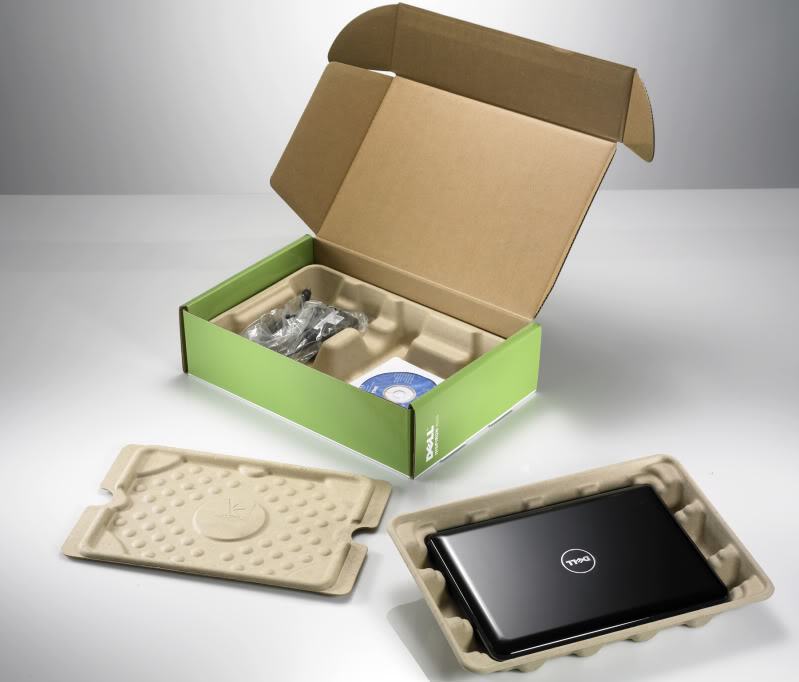Entering a green event run by Fortune Magazine in Orange County sets the stage for a few things – an audience of senior executives and government policymakers as well as a myriad of engaging debates and panels that spark ideas. After three days at Fortune Brainstorm Green last month in Laguna Niguel, I noticed that not only was there a megatrend happening – less companies are talking about green and more are pushing to put their money where their mouth is.
Bamboo fill not landfill
While many of the Brainstorm Green speakers brought up points about getting legislation changed, I started talking with Fortune 500 executives in between panels to see who had real results to speak to. I ran into Oliver Campbell, Dell’s senior manager of packaging worldwide. And he started talking about disruption in the tech space by highlighting that in a move to change the way technology is shipped and packaged, all Dell Inspiron Mini 10 and 10v netbooks will be shipped in packaging made from bamboo.
We all know bamboo is a highly renewable material that serves as a great alternative to molded paper pulp, foams and corrugate normally used in packaging. And as it turns out it was announced that the packaging is now compostable. “The use of bamboo for electronics packaging is pretty new, but its viability as a great packaging material can’t be ignored,” said Oliver Campbell.
Dell’s sustainability initiatives didn’t start with packaging. In fact, Dell came in #2 on Newsweek’s Green Rankings 2009 list. According to Michelle Mosmeyer who handles Sustainability Communications at Dell, “Sustainability has been a commitment for 25 years and we now have eight Dell campuses powered on 100% renewable from hydro or solar sources.” In addition their data centers use outside ambient air instead of ACs, which massively cuts power use. Their elevators have OLED lights and in August 2009 they installed a set of solar panels in their Round Rock HQ parking lot that gives power 138,000 kwH and doubles as shade!
Blue not green
During a panel on The Myth of the Green Consumer Adam Werbach, CEO of Saatchi & Saatchi S and previously the youngest Sierra Club president ever elected, acknowledged his advertising company is downplaying an emphasis on green campaigns because they are a losing novelty. Even his website says “at Saatchi & Saatchi S, we don’t actually do green…we do blue – blue influences not just the environmental dynamics of our world but also the social, cultural, and economic aspects too.”
At Opportunity Green, we’re also recognizing a shift for cities, not just companies, to create a smarter culture. Smarter in the sense that cities are focusing on smart urbanization and smart power. Fortune Brainstorm Green speakers like Yvon Chouinard of Patagonia and Vinod Khosla of Khosla Ventures acknowledge the need for connected, information-rich urban environments which can benefit government and businesses. Making cities smart can benefit the cities’ primary stakeholder – the citizen. In the home, the workplace and in public spaces we are seeing the need to go blue.

